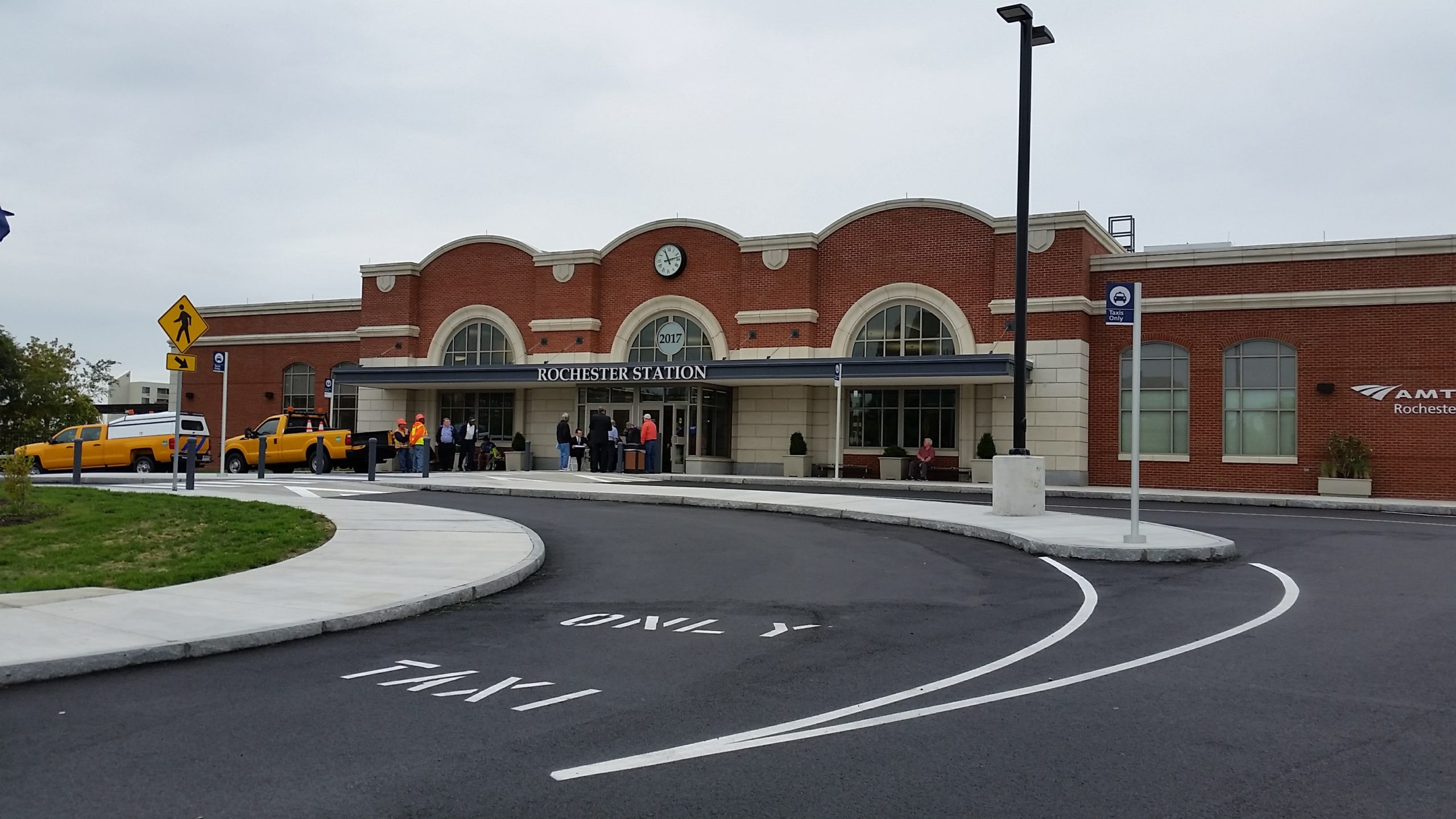The new station includes design features inspired by the Claude Bragdon designed station and is about 32-percent larger than the older Amtrak station it replaced. Most importantly, the new station features a central high-level platform serving two passenger tracks with additional outside freight tracks on either side for a total of five tracks through the station area. Previously, trains in either direction had to be switched to the single low-level platform on the southern-most track. This new capacity was used immediately when the first train into the station the westbound Amtrak Maple Leaf No. 63 arrived just a minute before the on-time eastbound Maple Leaf No. 64 pulled into the station.
The new Rochester station opened roughly on schedule but considerably over budget. The original cost estimate was budgeted to be around $29.8 million dollars but ended up costing $44 million. The total cost was split between the federal government, the state, and the city of Rochester.














Do you think you might enjoy this design without having to poke a finger in somebody else’s eye as you do?
The Bragdon station was closed around 1959, and station operations were moved to one of the pedestrian underpasses. All but the west end of the station (which was retained for a few office functions) was demolished in the spring of 1965. A new station was built by Amtrak in 1977: it was never considered to be a temporary station until the build-up to the construction of the newly dedicated station. Interestingly, it retained one of the platform canopies that was originally erected for the 1914 building.
The facility that used the pedestrian underpass was considered one of the three worst Amtrak facilities in the system until it was replaced.
How were those trains “on-time.” Can Amtrak really run an on time train when the politicians are waiting for it? I will bet a dollar that every train was hideously late the very next day.
I love the look of this new station – congrats to the architect. Good to see new buildings which look so classy and “traditional”. And I agree with the sentiments of Robert McGuire & Howard Fine, even though some of it is so “Politically-INcorrect”!!
Mr. Fine, I hear ya. My population estimate from Wikipedia was for the city itself. The metro area was at 1.1 million I believe. And you’re right on your other points also. They are spending millions on a new Penn Station that will become nothing more than a fancy homeless shelter. One of the reasons to travel Acela first class is to avoid the homeless by using the Club Acela although that isn’t any wonderful spot either. San Francisco hasn’t been a good place to visit and stay in many years. I experienced the customs and immigration issues first hand this past April and couldn’t believe the delays and hassles. I don’t see why anyone (other than railfans) would even consider the train. It takes 12 hours to go from New York to Toronto on the Maple Leaf while you can fly there in about an hour. Even with the time to get to and from the airport that’s over twice the time.
Comment about Rochester population even if accurate is misleading, the greater area is at least 750,000. As a retired engineer I try to go by train if possible . But the reality is that if I could try to explain and encourage an alternative to the horrid experience of flights to JFK, LGA (currently an easy one and one half hour time to get to departure or arrival ) even my wife will not any longer go through PENN Station since the threat and fear of the homeless, after the elimination of the problem, under the current joke city government now has let them all return worse than ever. We will not go to San Francisco.to experience public urination and defication at Union Square. We no longer go to Toronto for a monthly get away after two hour waits for custom immigration to clear under fifty passengers for a five hour ride versus a three hour drive. Get rid of every one of the wasteful suckers and turn the new station into a museum of the past.
The New York Central station was torn down in 1967 – its been 50 years that Rochester had temporary stations and the promise of a new replacement station.
Well, even at an over-budget $44,000,000 this new station seems a bargain compared to the proposed new station in Ann Arbor, MI that is currently estimated to cost the taxpayers $80,000,000. And this with a Rochester population of about 210,500 in 2010 vs. about 114,000 in Ann Arbor. But hey, the contractors in Michigan know that the government is a bottomless pit for money to be spent.